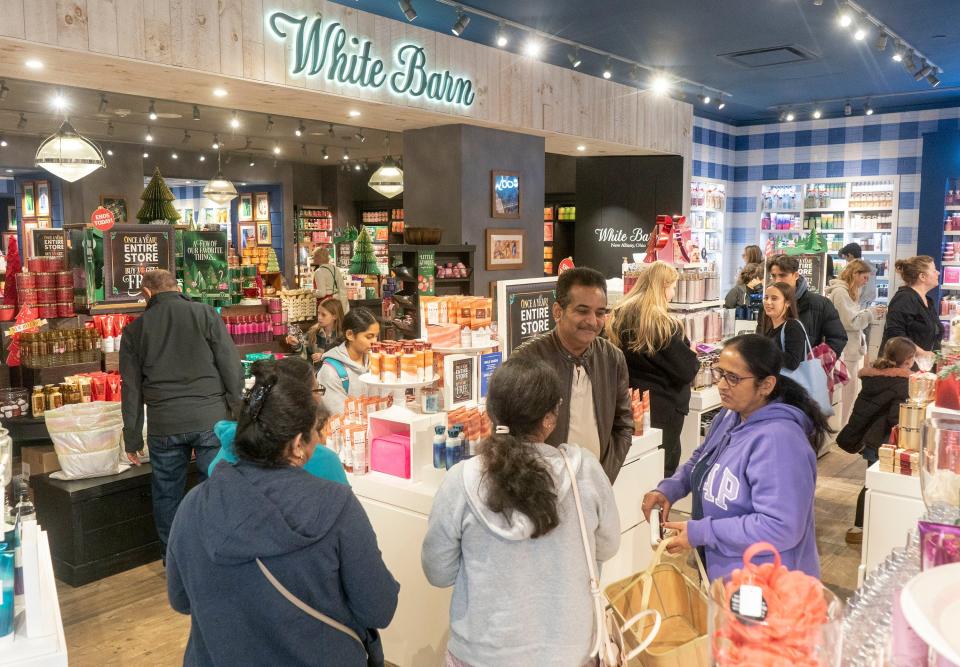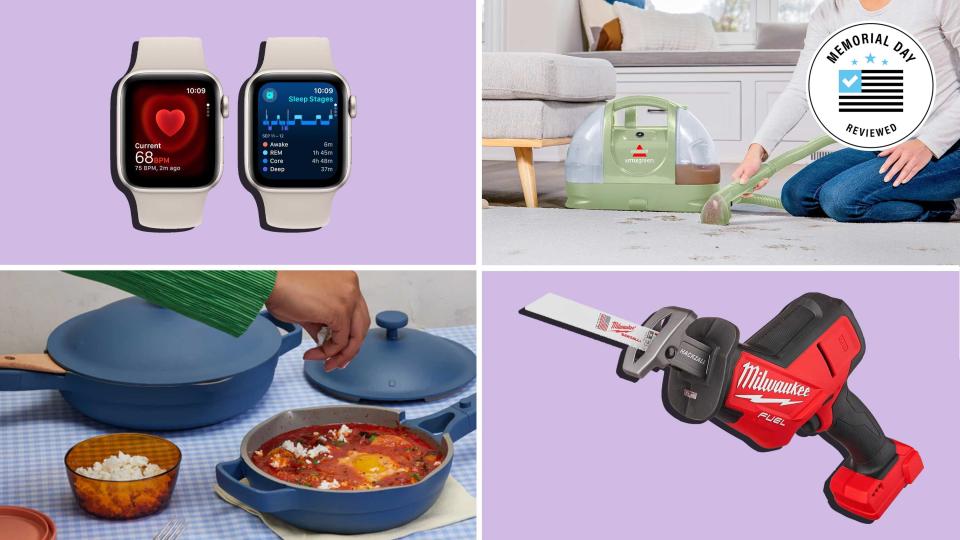Buy two, get one half off? How 'spaving' discounts can derail your finances
Any time you buy two of something and get a third item for half off, or add a few dollars to an online order to secure free shipping, you are “spaving.”
Spaving is a mashup of “spending” and “saving”: spending more to trigger savings.
But don’t fool yourself, experts say: Spaving is mostly spending.
“It’s always more spending. It’s not always more saving,” said Jeff Galak, an associate professor of marketing at the Tepper School of Business at Carnegie Mellon University in Pittsburgh.
Spaving has been in the news lately. It sounds like something new: The term has seldom appeared in this publication. It isn’t in the online Merriam-Webster dictionary. Type it into your word processor and watch your spellchecker erupt in protest.

'Spaving': A concept as old as the shopping mall
The concept behind spaving, however, goes wa-a-ay back.
“Spaving, besides being a terrible word, is not a new idea,” Galak said. “These promotions have been around forever.”
Here’s the basic concept: A merchant entices a customer to spend a little more, or a lot more, by offering a discount as a reward. Buy a third item, or a fourth, or a fifth, and get the last one free. Add another ten dollars to your cart, and that $5 shipping fee goes away.
Who needs a gallon of extra-virgin olive oil? Maybe you do, at the right price.
Customers may be seeing a lot of spaving offers this summer. Inflation has been pushing up prices. A dozen eggs cost about twice what they did in 2019. Overall, consumer prices rose by nearly one-fifth between 2019 and 2023, federal data show.
Consumers are pushing back. In response, retailers are rolling out deals.
Fast food chains are reviving the value meal in the wake of consumer backlash against reports of $15 Big Macs.
Target and Walgreens have announced summer price cuts. More customers are choosing discounted store brands.
Spending less for the same Happy Meal you bought a week ago is a no-brainer. Spaving, by contrast, can quickly spiral out of control.
'Spaving' can lead to overspending, needless purchases
The problem with spaving, experts say, is that it can lead a shopper to overspend on something they did not want, do not need and will not use.
“It’s always good to save money. The problem is when you’re spending money you wouldn’t have spent otherwise,” said Kimberly Palmer, a personal finance expert at NerdWallet.
Palmer herself recently succumbed to a spaving offer.
“It was a buy one, get one free,” she said. “I never intended to get a second shirt. It was for my daughter. I went ahead and bought two.”
The second shirt was free, so Palmer got a great deal, right?
Well, maybe not. She paid full price for the first shirt. Absent the spaving deal, she would have held out for a discount. In the end, she said, “I did spend more than I wanted to.”

When is 'spaving' a good deal?
There is really only one kind of spaving offer that guarantees a good deal, experts say: One that has you spending less money in the end.
“Say you’re going to check out, and your cart is $5 short of the minimum to save you $30 on shipping,” said Cassandra Happe, an analyst at WalletHub. “Then, maybe spending the $5 to get the free shipping is a good idea.”
Most of the time, though, spaving makes you spend more: That’s the point, at least from the retailer’s perspective.
And if you are spending more, are you still getting a better deal? It depends.
Before you commit to buying more of something to trigger a discount, experts say, ask yourself these questions:
Is it something you would buy anyway?
Can you afford it?
Will you use all of it?
Is it perishable?
Do you have space to store it?
Stocking up on laundry pods, or frozen steaks, or paper napkins at volume-discount prices might make all the sense in the world.
“My husband and I both work from home,” Happe said. “So, necessities like toilet paper, stuff like that, we buy that in bulk now, because we know we’re going to go through it.”
Be careful, though, if you see a spaving offer on ears of corn, or bananas, or nonfrozen steaks. Or anything with a short shelf life. Or anything your family might tire of consuming. Or anything you wouldn’t buy anyway.
What is the psychology behind 'spaving'?
The appeal of spaving is obvious: Consumers like to think they are saving money.
“You get that temporary emotional high because you feel like you locked in a good deal,” said Kris Yamano, a partner at Crewe Advisors in Scottsdale, Arizona.
The problem comes, Yamano said, when consumers want to save money so badly that they end up spending more of it, and on things they won't use.
“You walk into Target, and you’re just there to buy dish soap,” she said. “But then there’s a deal in the next aisle, and you’re walking out with a cart full of stuff you don’t need.”
The arithmetic behind spaving can be tricky.
Let’s say you buy three pairs of shoes, with the third offered at 50% off.
Savings, needs, wants: Here's how to better budget your cash
A quick calculation reveals that you’re not really saving 50%. You’re only saving that much on one item. If each pair costs $50, you save $25 on the entire purchase, lowering the tab from $150 to $125: a savings of about 17%.
And what if the third pair costs only $30? In the typical spaving deal, the retailer takes the discount on the cheapest item. Now, you’re saving only $15, lowering the price from $130 to $115. Your savings drops below 12%.
A consumer can figure this out with an iPhone calculator. But few of us have time to do the math.
“A lot of times, with spaving, it’s a high-pressure situation,” Palmer said. “It’s going to expire in the next few hours, at the end of the day, so there’s some urgency to it.”
More: Do we really need $1M in retirement savings? Not even close, one top economist says
Here are a few more expert tips on how to shop – and “spave” – without overspending:
Make a shopping list, and stick to it.
Set a budget, and don’t blow it.
If you consider a spaving offer, do the math.
Before you commit to a spaving deal, take some time to think.
"I will give myself 24 to 48 hours before purchasing something," said Jack Howard, head of money wellness at Ally Financial. After that pause, she said, "if it's still on my brain, then it's OK."
This article originally appeared on USA TODAY: 'Spaving' discounts can derail your finances

 Yahoo Finance
Yahoo Finance 